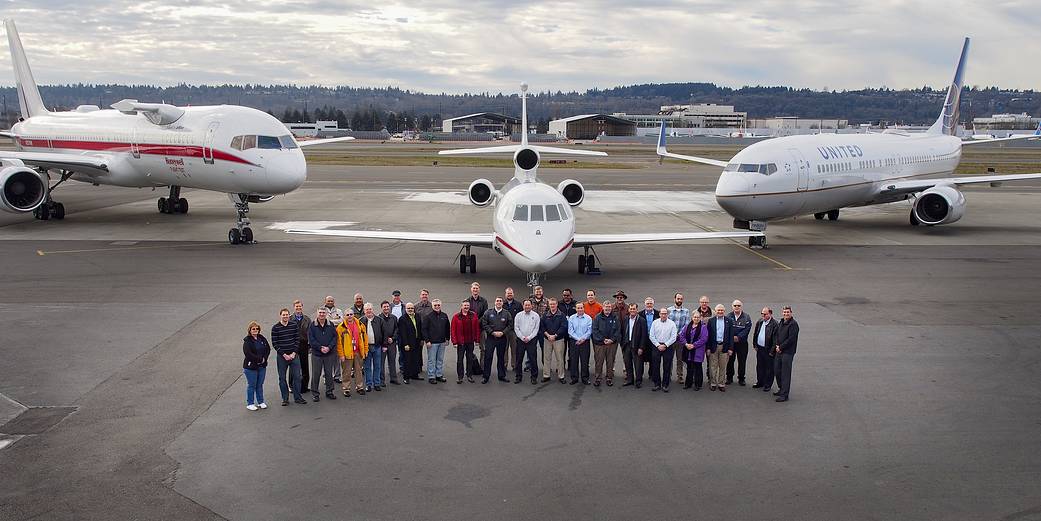Members of a NASA-led research team pose in front of a trio of aircraft, which on February 22 concluded racking up enough air miles to circle the planet four times, all in the name of testing a new cockpit-based air traffic management tool.
The prototype hardware and software is designed to automatically provide pilots with more precise spacing information on approach into a busy airport so that more planes can safely land in a given time. The technology is intended to help airplanes spend less time in the air, save money on fuel, and reduce engine emissions – all while improving schedule efficiency to help passengers arrive on time.
Using a Boeing 757 and Dassault Falcon business jet provided by Honeywell, and a Boeing 737 provided by United Airlines, the aircraft flew together above Washington state during 18 days of tests spread over a month. Early analysis indicates the tool – known as Flight Deck Interval Management – worked as expected. Additional data review will take some time, but for now the research team involving NASA’s Langley Research Center in Virginia and Ames Research Center in California, along with Boeing, Honeywell and United, are celebrating the successful flight test campaign.
“Our flight test team numbered more than 30 people, which is considered a very large team, and we functioned so well together. When we were in a team meeting, you could not tell who worked for which agency or company. Together we were focused on achieving our goals, which we did,” said Leighton Quon, NASA’s manager of the Airspace Technology Demonstrations project.
In addition to the NASA-led research team, officials representing the Federal Aviation Administration, the Electronic Navigation Research Institute of Japan, the Air Line Pilots Association, the National Air Traffic Controllers Association, American Airlines, Alaska Airlines, and Virgin America participated in or observed portions of the flight test campaign.





































